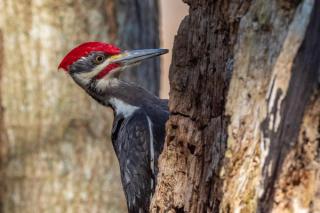
Changes to the Migratory Bird Regulations
- Post Date
- 19 March 2023
- Read Time
- 3 minutes

What you need to know about the changes to the Migratory Bird Regulations - the highlights
The Migratory Bird Regulations (MBR 2022) under the Migratory Birds Convention Act, (MBCA1994) updates came into force on July 30, 2022. The changes add new provisions for certain migratory birds and clarifies when their nests are protected. For most birds regulated under the MBCA, nests are protected when they contain a bird or viable egg. However, the 2022 MBR update provides year-round protection to the nests of 18 species now listed under Schedule 1, because they are re-used annually. For these nests, a designated waiting period is now required. This means the nest must be protected year-round until the nest can be deemed abandoned. That is, the nest has remained unoccupied during a designated waiting period. For example, Pileated woodpecker nest has a designated waiting period of 36 months even when unoccupied.
Why the change?
The main changes under the MBR 2022 relevant to development projects include:
- Clarifies when a nest is protected.
- Provides protection for species that reuse nests.
- Ensures the retention of dead or dying trees (snags) and cavities that provide nesting structure for other migratory bird species.
Protection Details
As before, nests are protected from disturbance. For most migratory birds, the protection ends when young have fledged and left the nest; however, for the nests of the 18 species (now listed in Schedule 1 of the MBRs), protection remains until it has been abandoned. To be classified as abandoned, it must not have been used in the previous breeding seasons during the designated wait period. If there is a need to damage, disturb, destroy, or remove a nest of a schedule 1 species, there is a new requirement to provide notice to the ECCC and register a nest under the new Abandoned Nest Registry. Only in certain circumstances, as a last resort, and when ECCC is satisfied with alternative mitigations, a permit might be possible to relocate or destroy a nest.
Planning Ahead
Wildlife sweeps and bird nest surveys have been relied upon to identify nests for protection immediately before development. However, the discovery of a pileated woodpecker nest immediately before clearing activities would result in a three-year delay.
There are several changes to the 2022 MBR updates, not all of which are touched on here. SLR’s Wildlife ecologists can assist with navigating these changes. Although recommendations for avoidance and mitigations are project specific, to help you avoid delays on your projects, SLR can, for example:
- Discuss how the MBRs apply to your projects.
- Evaluate the likelihood of Schedule 1 species.
- Determine the need for targeted surveys to identify Schedule 1 species and their nests.
- Monitor Schedule 1 nests to determine occupancy through the designated waiting period.
- Register nests, develop alternative mitigation, liaise with regulators, and apply for permits, when appropriate.
- Complete routine wildlife sweeps and bird nest searches immediately prior to clearing.
For More Information
Reach out to SLR’s Wildlife Specialists to discuss ways we can assist:
Stephen Symes, Senior Wildlife Specialist: ssymes@slrconsulting.com and
Kim Laframboise, Wildlife and Species at Risk Specialist: klaframboise@slrconsulting.com
Review Environment and Climate Change Canada’s Information documents by clicking the links below:

